- Back to Home »
- What we learned from epic flood
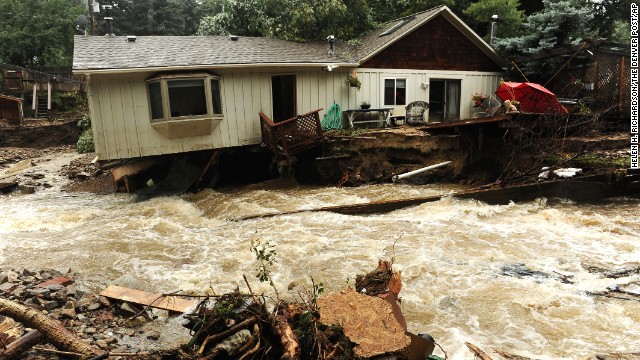 Floodwaters surround a home in Jamestown, Colorado, on Sunday, September 15. Flooding in Colorado has washed away roads and bridges and flooded homes, and authorities warned that more rain was on the way. At least four people have been killed, and hundreds are unaccounted for, officials say.
Floodwaters surround a home in Jamestown, Colorado, on Sunday, September 15. Flooding in Colorado has washed away roads and bridges and flooded homes, and authorities warned that more rain was on the way. At least four people have been killed, and hundreds are unaccounted for, officials say. 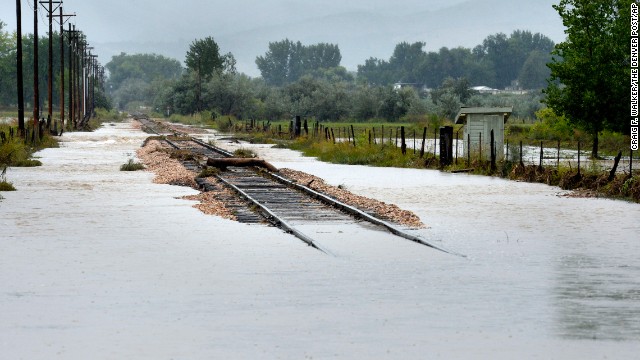 Railroad tracks are washed out in Longmont, Colorado, on September 15.
Railroad tracks are washed out in Longmont, Colorado, on September 15. 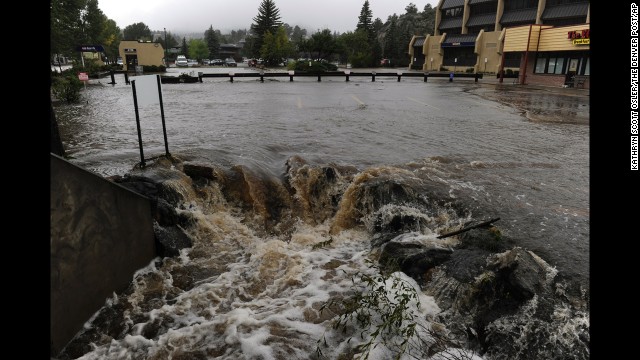 Water pours out of a parking lot, overwhelming a culvert heading under the roadway, in Estes Park, Colorado, on September 15.
Water pours out of a parking lot, overwhelming a culvert heading under the roadway, in Estes Park, Colorado, on September 15. 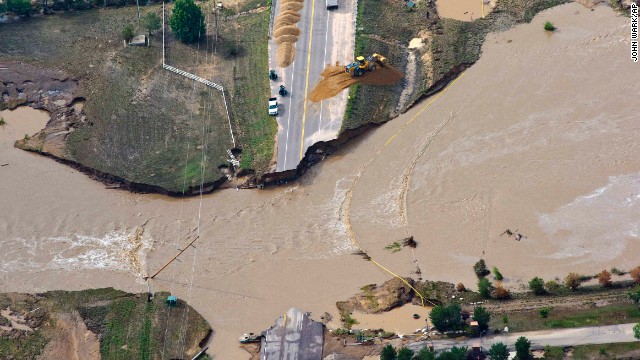 A road crew works on a stretch of highway washed away by flooding along the South Platte River near Greeley, Colorado, on Saturday, September 14.
A road crew works on a stretch of highway washed away by flooding along the South Platte River near Greeley, Colorado, on Saturday, September 14. 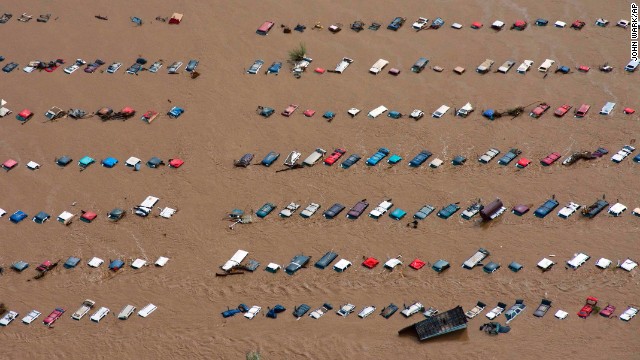 Parked vehicles sit partially submerged near Greeley, Colorado, on September 14.
Parked vehicles sit partially submerged near Greeley, Colorado, on September 14. 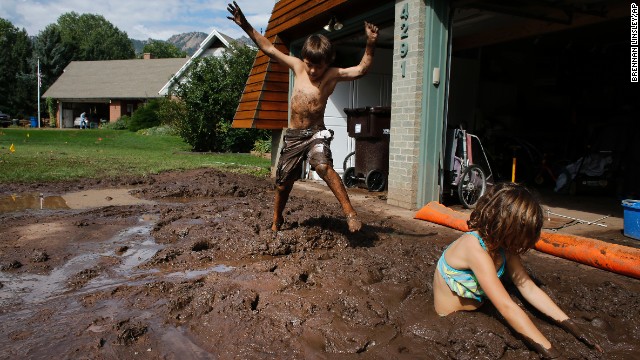 Eli and Noe Sura play in the mud around their Boulder, Colorado, home on September 14.
Eli and Noe Sura play in the mud around their Boulder, Colorado, home on September 14. 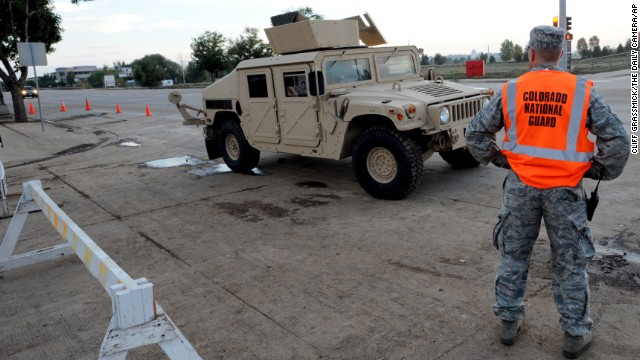 A National Guardsman stands at South Main and Missouri streets in Longmont, Colorado, on September 14.
A National Guardsman stands at South Main and Missouri streets in Longmont, Colorado, on September 14.  Floodwaters swamp Longmont, Colorado, on September 14.
Floodwaters swamp Longmont, Colorado, on September 14. 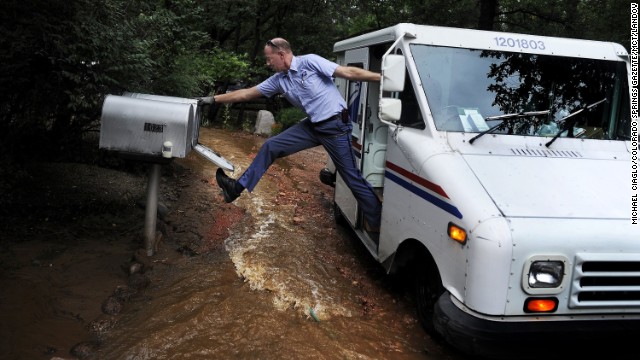 Dave Jackson closes a mailbox with his foot after delivering the mail to a home surrounded by water from the flooded Cheyenne Creek in Colorado Springs, Colorado, on Friday, September 13.
Dave Jackson closes a mailbox with his foot after delivering the mail to a home surrounded by water from the flooded Cheyenne Creek in Colorado Springs, Colorado, on Friday, September 13. 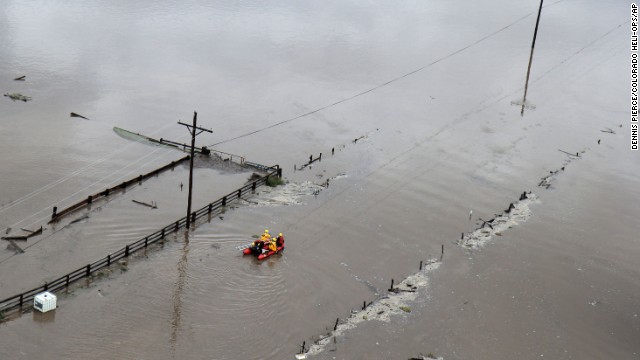 Rescue personnel search for flood victims near Fort Collins, Colorado, on September 13.
Rescue personnel search for flood victims near Fort Collins, Colorado, on September 13. 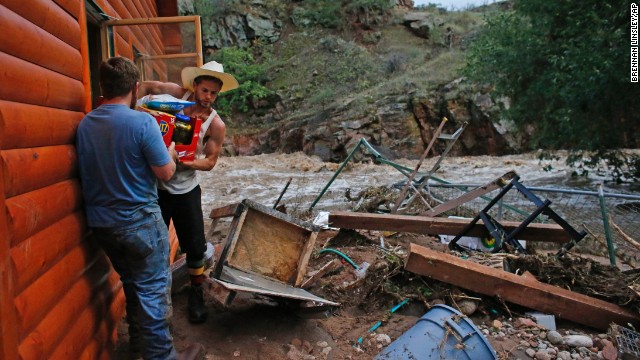 Chris Rodes helps Fred Rob salvage a friend's belongings after floods left homes and infrastructure in shambles in Lyons, Colorado, on September 13.
Chris Rodes helps Fred Rob salvage a friend's belongings after floods left homes and infrastructure in shambles in Lyons, Colorado, on September 13. 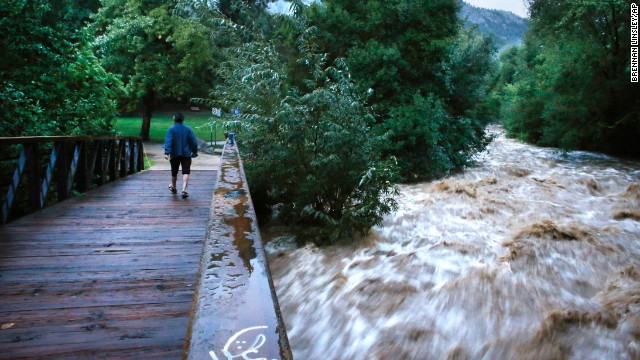 During a break in the rain, a woman walks over a footbridge past the raging Boulder Creek in Boulder on September 13. Boulder County is one of the hardest-hit areas.
During a break in the rain, a woman walks over a footbridge past the raging Boulder Creek in Boulder on September 13. Boulder County is one of the hardest-hit areas. 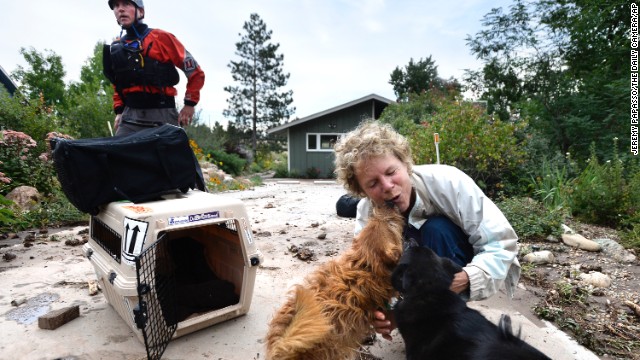 Suzanne Sophocles hugs her dogs after they were rescued from her flooded home on September 13 in Boulder. Thousands of people stranded by the flood waters in Colorado were finally able to come down by trucks and helicopters, two days after seemingly endless rain turned normally scenic rivers and creeks into coffee-colored rapids that wrecked scores of roads and wiped out neighborhoods.
Suzanne Sophocles hugs her dogs after they were rescued from her flooded home on September 13 in Boulder. Thousands of people stranded by the flood waters in Colorado were finally able to come down by trucks and helicopters, two days after seemingly endless rain turned normally scenic rivers and creeks into coffee-colored rapids that wrecked scores of roads and wiped out neighborhoods. 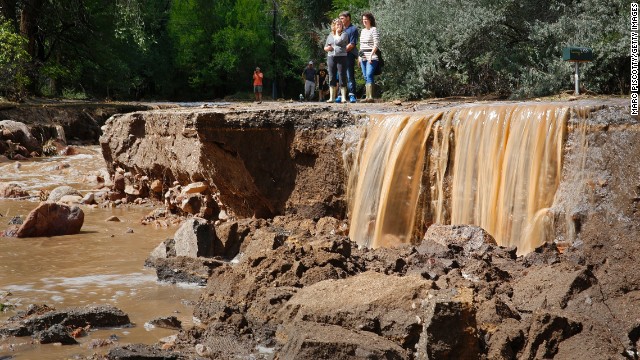 Residents look at the flood damage along Topaz Street in Boulder on September 13.
Residents look at the flood damage along Topaz Street in Boulder on September 13. 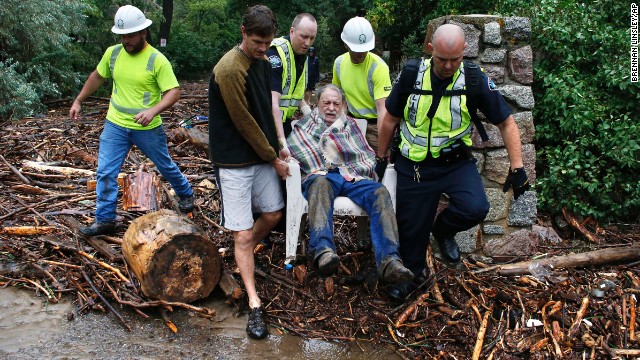 Will Pitner gets rescued by emergency workers and neighbor Jeff Writer on September 13 after he spent a night trapped outside above his home at the base of Boulder Canyon.
Will Pitner gets rescued by emergency workers and neighbor Jeff Writer on September 13 after he spent a night trapped outside above his home at the base of Boulder Canyon. 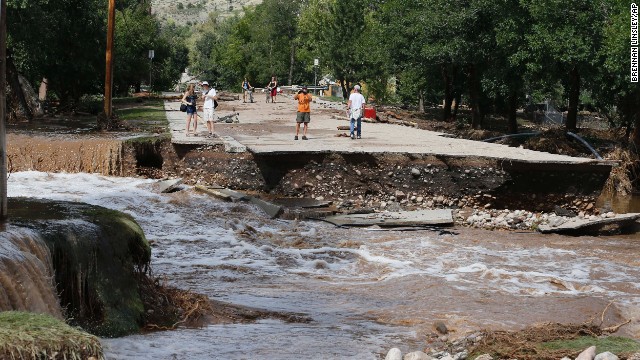 Water rushes where a bridge collapsed in a flash flood in Lyons, on September 13.
Water rushes where a bridge collapsed in a flash flood in Lyons, on September 13. 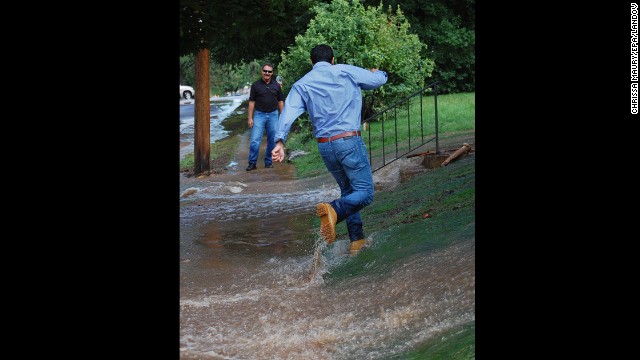 A man runs through the floodwaters in a yard in Boulder on September 13.
A man runs through the floodwaters in a yard in Boulder on September 13. 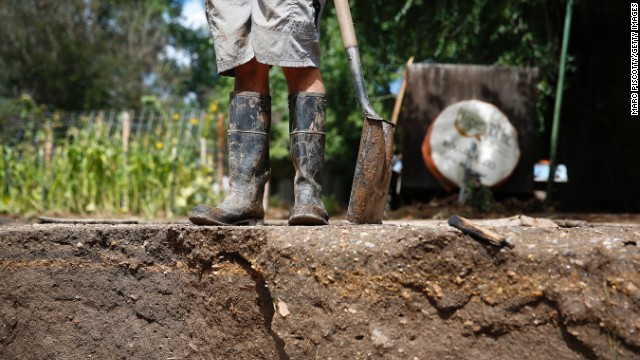 Topaz Street resident Jake Koplen stands at the edge of his driveway after the street in front of his home was washed away in Boulder on September 13.
Topaz Street resident Jake Koplen stands at the edge of his driveway after the street in front of his home was washed away in Boulder on September 13. 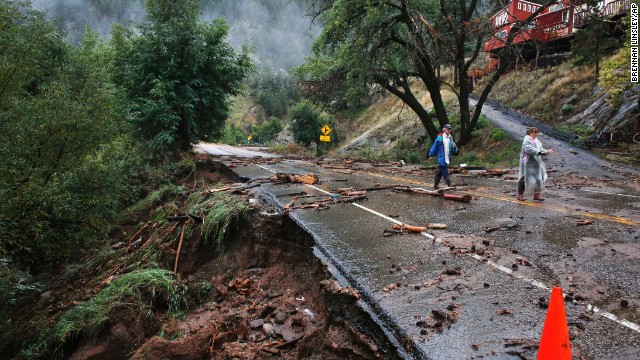 Siblings Patrick Tinsley and Mary Kerns head to Boulder from the mountain community of Magnolia, Colorado, on September 13.
Siblings Patrick Tinsley and Mary Kerns head to Boulder from the mountain community of Magnolia, Colorado, on September 13. 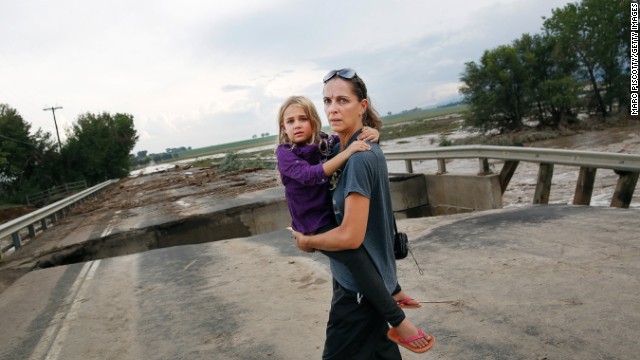 Samantha Kinzig of Longmont, Colorado, and her 5-year-old daughter, Isabel, take a closer look at the damaged bridge on Weld County Road 1 on September 13.
Samantha Kinzig of Longmont, Colorado, and her 5-year-old daughter, Isabel, take a closer look at the damaged bridge on Weld County Road 1 on September 13. 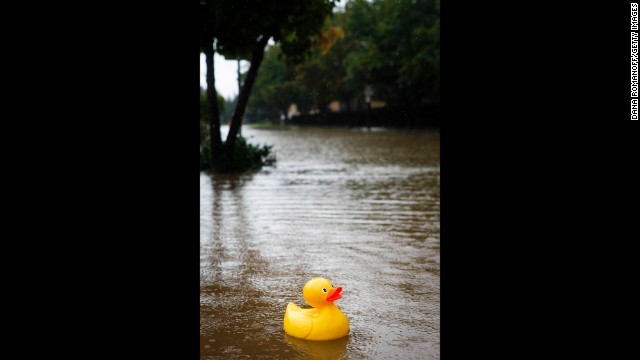 A rubber ducky floats down Ninth Street alongside North Boulder Park in Boulder, on Thursday, September 12.
A rubber ducky floats down Ninth Street alongside North Boulder Park in Boulder, on Thursday, September 12. 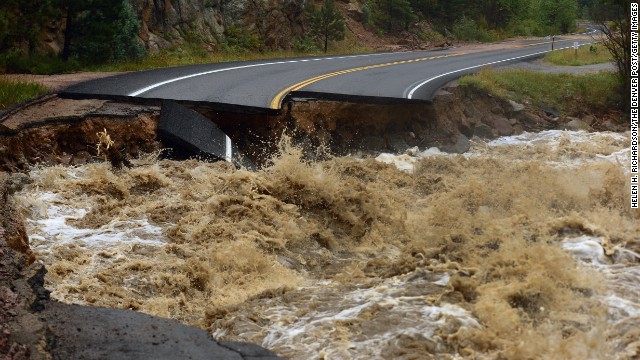 Highway 7 is completely blown out from the South St. Vrain River as a torrent of raging water rips through it about 12 miles west of Lyons on September 12.
Highway 7 is completely blown out from the South St. Vrain River as a torrent of raging water rips through it about 12 miles west of Lyons on September 12. 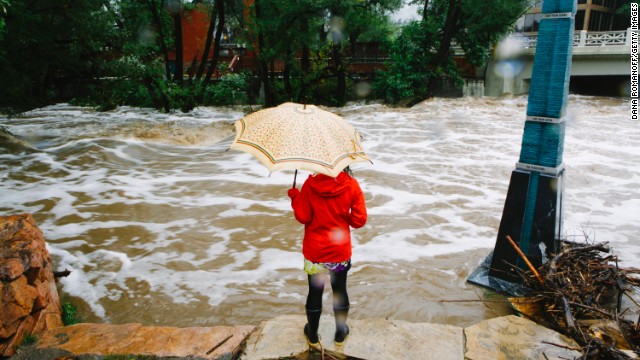 A woman looks at the flooded Boulder Creek on September 12.
A woman looks at the flooded Boulder Creek on September 12. 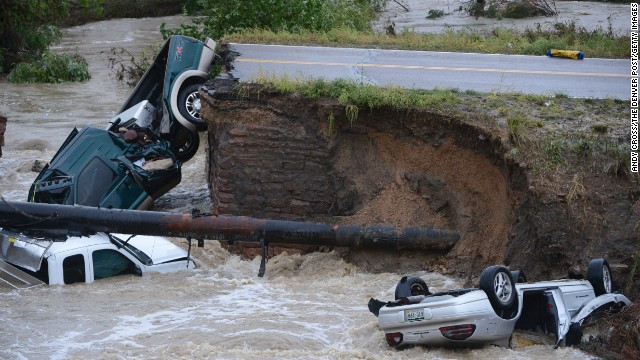 Three vehicles crashed into a creek after the road washed out from beneath them in Broomfield, Colorado, on September 12. Three people were rescued.
Three vehicles crashed into a creek after the road washed out from beneath them in Broomfield, Colorado, on September 12. Three people were rescued. 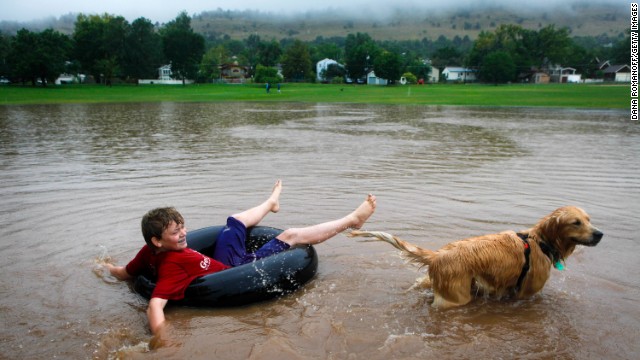 Nicky Toor, 15, floats on the flooded lawn of North Boulder Park in Boulder on September 12.
Nicky Toor, 15, floats on the flooded lawn of North Boulder Park in Boulder on September 12.  Joey Schusler rides through flooded Canyon Boulevard in Boulder, on September 12.
Joey Schusler rides through flooded Canyon Boulevard in Boulder, on September 12.  Residents view a road washed out by a torrent of water after overnight flash flooding near Left Hand Canyon, Colorado, on September 12.
Residents view a road washed out by a torrent of water after overnight flash flooding near Left Hand Canyon, Colorado, on September 12. 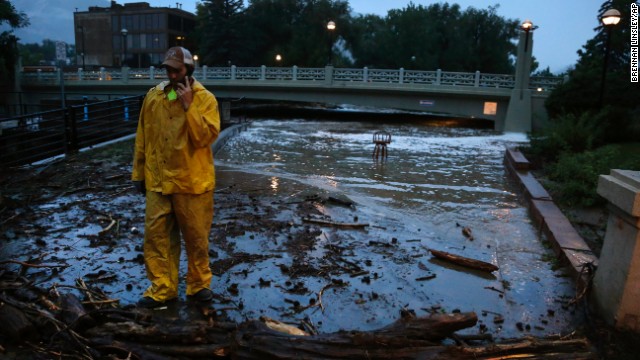 A city worker talks on his phone while surveying high water levels from Boulder Creek after flash flooding in downtown Boulder, Colorado, on September 12.
A city worker talks on his phone while surveying high water levels from Boulder Creek after flash flooding in downtown Boulder, Colorado, on September 12. 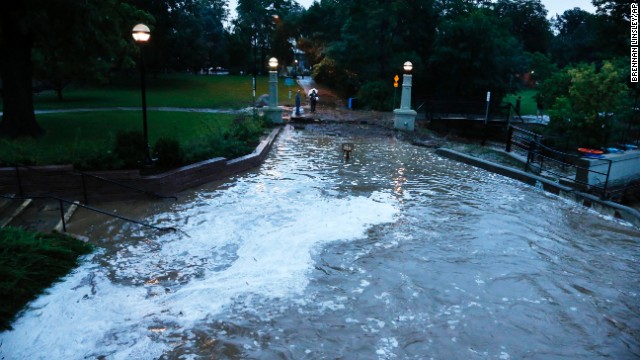 Flash flood waters rush over a walking path in downtown Boulder on September 12.
Flash flood waters rush over a walking path in downtown Boulder on September 12. 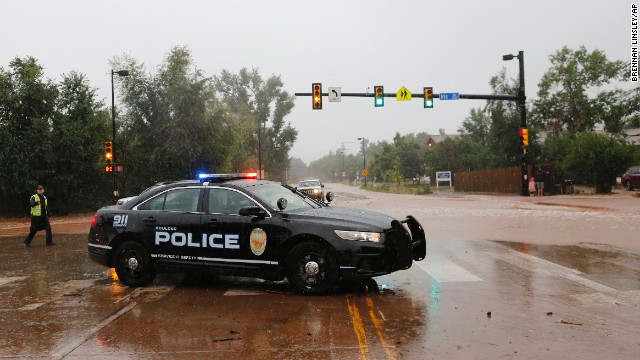 A police officer blocks off a road in Boulder on September 12.
A police officer blocks off a road in Boulder on September 12. 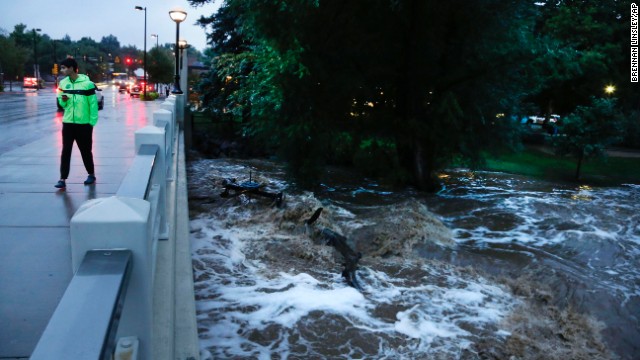 A man walks past the swelled Boulder Creek in Boulder on September 12.
A man walks past the swelled Boulder Creek in Boulder on September 12. 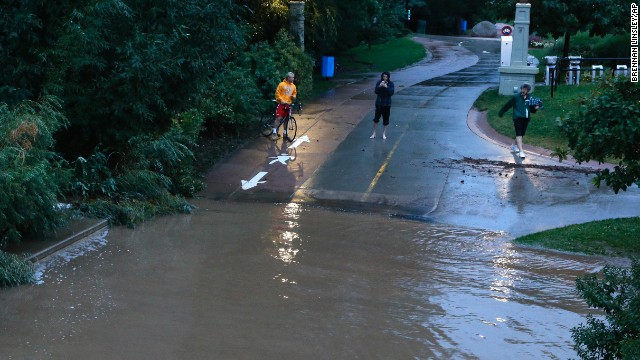 People stand at the edge of floodwaters in Boulder on September 12.
People stand at the edge of floodwaters in Boulder on September 12. 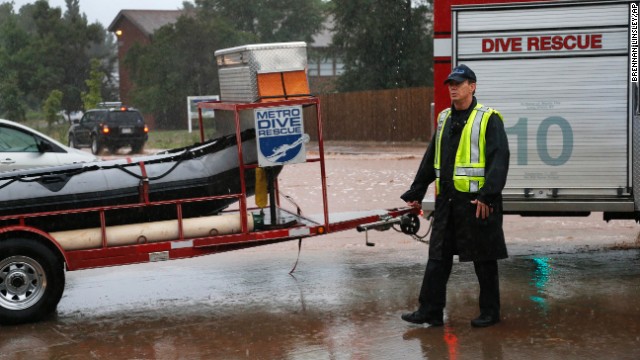 A dive rescue team moves toward floodwaters in Boulder on September 12.
A dive rescue team moves toward floodwaters in Boulder on September 12. 
1

2

3

4

5

6

7

8

9

10

11

12

13

14

15

16

17

18

19

20

21

22

23

24

25

26

27

28

29

30

31

32

33
- Deb Markowitz: Vermonters' hearts and prayers are with flood victims in Colorado
- She says Vermont learned lessons from the epic floods from Tropical Storm Irene
- Markowitz: One lesson is to resist temptation to build back in the same form as before
Editor's note: Deb Markowitz is secretary of the Vermont Agency of Natural Resources.
(CNN) -- For many Vermonters, the devastating floods in Colorado are a stark reminder of the disaster Vermont experienced just two years ago as a result of Tropical Storm Irene.
I remember being in shock as I made my way across our battered state, seeing so many of our most treasured features -- our covered bridges, fertile farmland, historic downtowns, and winding rural roads -- destroyed by the tremendous force of floodwater.
The storm's 60-mph winds and up to 11 inches of rain damaged 3,500 homes and businesses, 500 miles of state roads and 200 bridges. And tragically, six lives were lost, including those of a father and son, city employees who were checking on the community's wastewater treatment facility.
Colorado floods: Stories of grief, generosity and gratitude
In the days, weeks and months that followed Irene, Vermont state government joined together with our local and federal government, nonprofits, and legions of volunteers to get people and communities back on their feet as quickly as possible. At the Agency of Natural Resources, we responded to spills of hazardous waste, gasoline and oil. We helped communities repair drinking water and sewage treatment systems. We supported our transportation agency and our cities and towns as they quickly rebuilt roads and bridges.
We responded to calls to address the large accumulations of gravel, tree trunks, cars, refrigerators, propane tanks and endless amounts of debris that threatened to cause further damage to bridges, roads and homes, or presented a risk of harm to public health and safety.
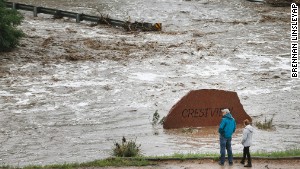 'Biblical' rain overwhelms Colorado
'Biblical' rain overwhelms Colorado 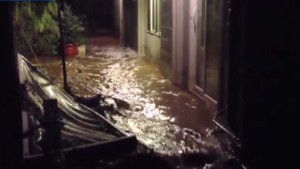 Thousands in Colorado flee floodwaters
Thousands in Colorado flee floodwaters 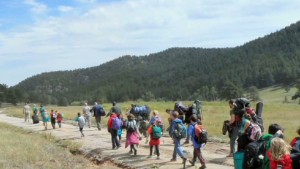 Desperation deepens in Colorado
Desperation deepens in Colorado 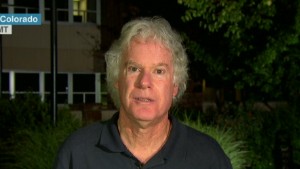 Disaster in Colorado
Disaster in Colorado From that emergency response, we learned a few critical lessons that I offer for our counterparts in Colorado:
Sleep and eat. This flood emergency response will continue for many weeks. It is a marathon, not a sprint, and you and your staff can only be helpful if you take care of your own basic needs.
Ask for help. Many folks want to help, including experts who are prepared to pitch in at a moment's notice. Take some time to think carefully about where you could use the extra boots on the ground and ask for assistance.
Communicate. The first casualty of a crisis is information. Make sure you have the facts before you act. Talk to the folks in the field. Share relevant information with the emergency response directors. Let the public know what you know through updates and guidance from your experts. You cannot communicate too much.
Build back with resilience in mind. Two years after Irene, we are still recovering. Communities are still rebuilding roads and bridges. Some destroyed houses can still be seen, too damaged to repair. Perhaps as a consequence of global climate disruption we are seeing significant increases in the frequency and intensity of storms in Vermont so that even as we rebuild, many of our communities have faced additional flooding since Irene. From these facts, we have learned that it is important to look ahead and rebuild with future resilience to flooding in mind.
Once the water goes down, everyone will have the same initial instinct to quickly replace everything and restore communities to the way they were before the flood. Sometimes that instinct is correct. Putting a road or bridge back as soon as possible may be critical to a community's ability to ensure that its citizens can get emergency services and food. But other times, the desire to put everything back just the way it was before is misplaced.
We discovered in Vermont that much of the damage we experienced after Irene mirrored damage from flooding in 1927 and again in the 1970s, because we rebuilt in the same way and in the same places.
We are trying not to repeat that mistake. So when we rebuild our roads, culverts, bridges and wastewater and drinking water systems, we are taking into account the more intense weather events we can expect in the future, and we are building this infrastructure to withstand future flooding.
We are also taking advantage of our natural assets to make us more flood-resilient by giving our rivers room to move and by protecting our natural systems such as floodplains, wetlands and vegetation along river corridors. This will provide critical flood protections for our communities.
For the moment, however, we in Vermont know well that the first priority in Colorado must be to rescue those whose lives are at risk, to reconnect communities and families that have been cut off by the disaster, and to ensure that every person has a place to stay and food to eat.
We also know that this first emergency response will be just the first step on what will be a long and challenging journey. For all of these reasons, our hearts and prayers are with all Coloradans.
Follow @CNNOpinion on Twitter.
Join us at Facebook/CNNOpinion.
The opinions expressed in this commentary are solely those of Deb Markowitz.







